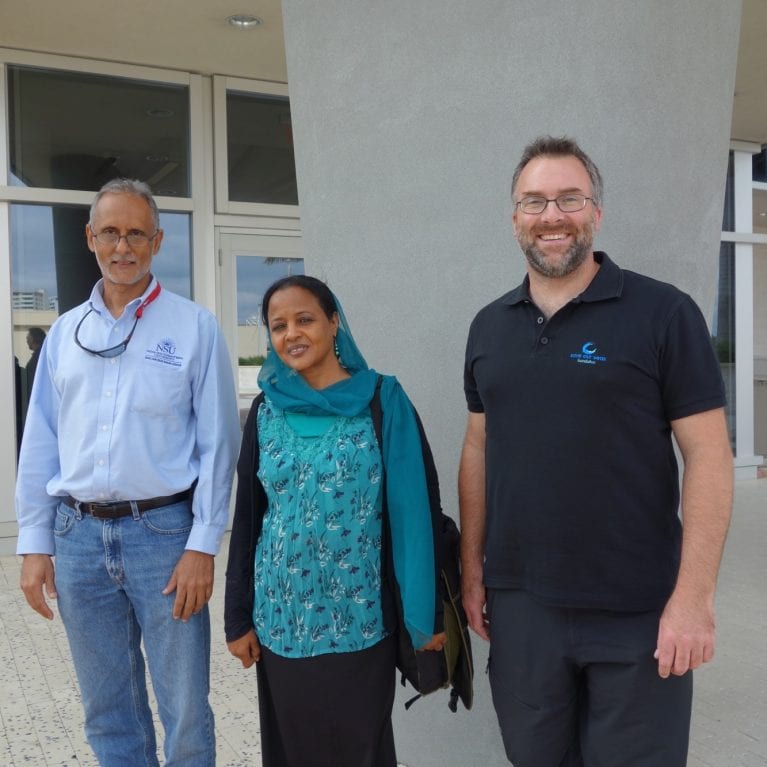Decoding desert sharks
Igbal is Sudan’s first shark scientist. She has spent years collecting tissue samples of sharks at local landing sites. Using genetics, she hopes to crack the code of shark populations in the Red Sea.
I grew up in Port Sudan, where the Red Sea shimmers with crystal water and beautiful coral reefs. I will never forget the moment when, as a child, I stared through the glass bottom of a boat and saw countless colourful fishes and healthy reefs. I think it was that beauty that subconsciously inspired me to study fisheries when I joined the University of Juba, the first university in Sudan to offer a course on fisheries in the country.
The curriculum focused mainly on freshwater fishes, so little was taught about cartilaginous fishes and my knowledge of sharks, skates and rays...

Population Genetics of Some Shark Species from the Red Sea
The project aims to determine the genetic diversity and population structure of the grey reef shark Carcharhinus amblyrhynchoides, the scalloped hammerhead shark Syphrna leweni, the great hammerhead shark Sphyrna mokarran and the black tip shark Carcharhinus limbatus in the Red Sea by means of analyses of the mitochondrial DNA (mtDNA) control region and microsatellite genotyping.
To date no studies have been conducted on the genetic diversity or population structure of sharks along the Red Sea. Information on stock structure, migration rate and estimates of population size are important for effective conservation and management strategies for this fragile resource.
The grey reef shark, the scalloped hammerhead shark and the black tip shark are commercially important shark species along most of the Red Sea coast. The grey reef shark and the scalloped hammerhead shark are favoured species for shark-watching ventures in the Sudanese Red Sea. Claims have been raised concerning declining abundance of these species in the Red Sea, but no information is available regarding their abundance and their population structure.
The general aim of this project is to assist in conservation and management of these species in the Red Sea region. The specific objectives are:
- To assess population structure of the grey reef shark, black tip shark and the scalloped hammerhead shark in the Red Sea
- To determine the genetic diversity of these species
- To determine whether nursery areas of the grey reef shark and scalloped hammerhead shark along the Red Sea are genetically heterogeneous using DNA markers.

